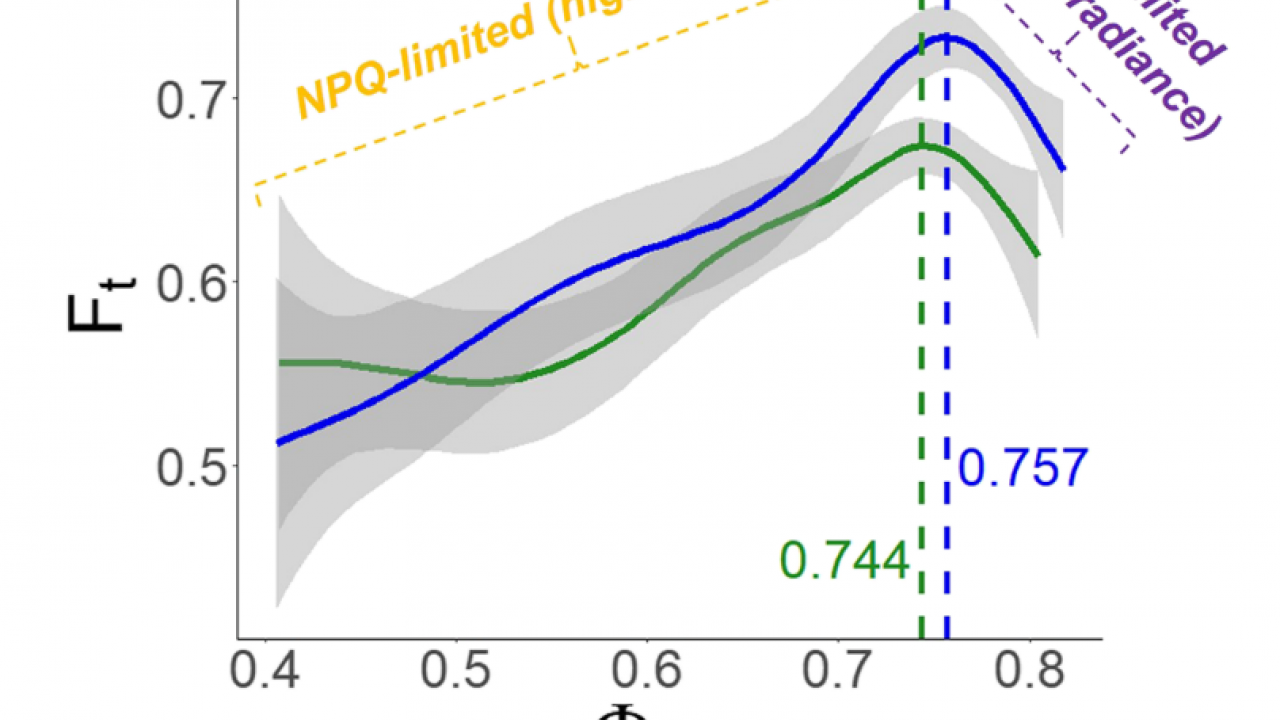
Understanding the non-linearity between fluorescence and photochemistry in evergreen needleleaf forests
Recent advancements in understanding remotely sensed solar‐induced chlorophyll fluorescence often suggest a linear relationship with gross primary productivity at large spatial scales. However, the quantum yields of fluorescence and photochemistry are not linearly related, and this relationship is largely driven by irradiance. This raises questions about the mechanistic basis of observed linearity from complex canopies that experience heterogeneous irradiance regimes at subcanopy scales. We present empirical data from two evergreen forest sites that demonstrate a nonlinear relationship between needle‐scale observations of steady‐state fluorescence yield and photochemical yield under ambient irradiance. We show that accounting for subcanopy and diurnal patterns of irradiance can help identify the physiological constraints on needle‐scale fluorescence at 70–80% accuracy. Our findings are placed in the context of how solar‐induced chlorophyll fluorescence observations from spaceborne sensors relate to diurnal variation in canopy‐scale physiology.
- Maguire, A. J., Eitel, J. U. H., Griffin, K. L., Magney, T. S., Long, R. A., Vierling, L. A., et al.. ( 2020). On the Functional Relationship Between Fluorescence and Photochemical Yields in Complex Evergreen Needleleaf Canopies. Geophysical Research Letters, 47, e2020GL087858. https://doi.org/10.1029/2020GL087858